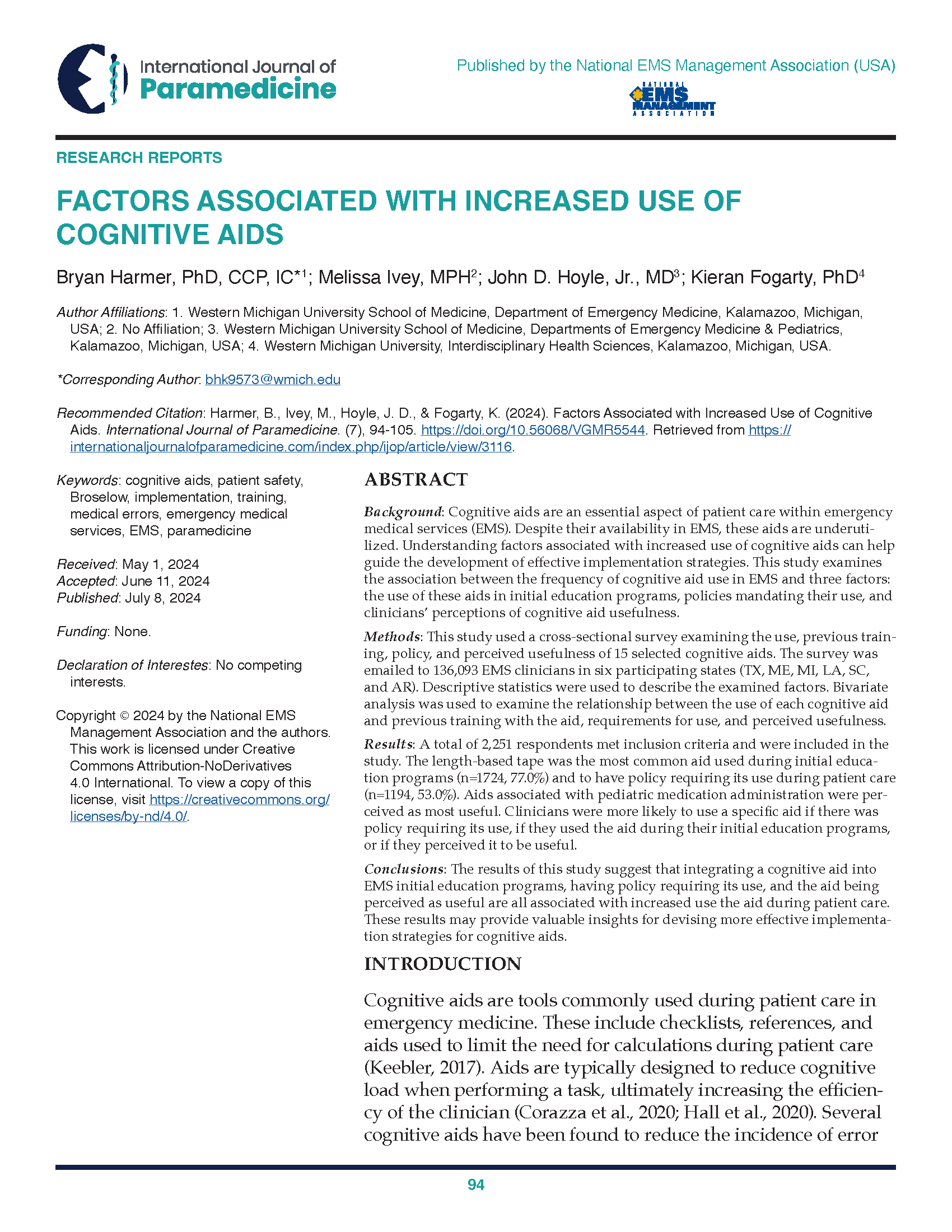Factors Associated with Increased Use of Cognitive Aids in Emergency Medical Services
Main Article Content
Abstract
Background: Cognitive aids are an essential aspect of patient care within emergency medical services (EMS). Despite their availability in EMS, these aids are underutilized. Understanding factors associated with increased use of cognitive aids can help guide the development of effective implementation strategies. This study examines the association between the frequency of cognitive aid use in EMS and three factors: the use of these aids into initial education programs, policies mandating their use, and clinicians’ perceptions of cognitive aid usefulness.
Methods: This study used a cross-sectional survey examining the use, previous training, policy, and perceived usefulness of 15 selected cognitive aids. The survey was emailed to 136,093 EMS clinicians in six participating states (TX, ME, MI, LA, SC, and AR). Descriptive statistics were used to describe the examined factors. Bivariate analysis was used to examine the relationship between the use of each cognitive aid and previous training with the aid, requirements for use, and perceived usefulness.
Results: A total of 2,251 respondents met inclusion criteria and were included in the study. The length-based tape was the most common aid used during initial education programs (n=1724, 77.0%) and to have policy requiring its use during patient care (n=1194, 53.0%). Aids associated with pediatric medication administration were perceived as most useful. Clinicians were more likely to use a specific aid if there was policy requiring its use, if they used the aid during their initial education programs, or if they perceived it to be useful.
Conclusions: The results of this study suggest that integrating a cognitive aid into EMS initial education programs, having policy requiring its use, and the aid being perceived as useful are all associated with increased use the aid during patient care. These results may provide valuable insights for devising more effective implementation strategies for cognitive aids.
Article Details

This work is licensed under a Creative Commons Attribution-NoDerivatives 4.0 International License.
Publishing in IJOP allows authors to keep their copyright while giving IJOP unrestricted copyright permissions. Articles published in IJOP use Creative Common Attribution 4.0 International (CC BY-ND 4.0) licensing. This license requires that re-users give credit to the creator. It allows re-users to copy and distribute the material in any medium or format in unadapted form only, even for commercial purposes. Additional terms apply and can be accessed here.
Publishing in IJOP also allows authors to have contracts for non-exclusive distribution of the Journal's published version of the article, such as posting to an institutional repository or publication in a book, on the condition that the original publication in the original layout format in IJOP is retained and acknowledged.
We permit and encourage authors to post the articles they published in IJOP on their affiliated websites. This helps share the information, encourages citation in other works, and promotes scholarly discourse in the spirit of open access.

